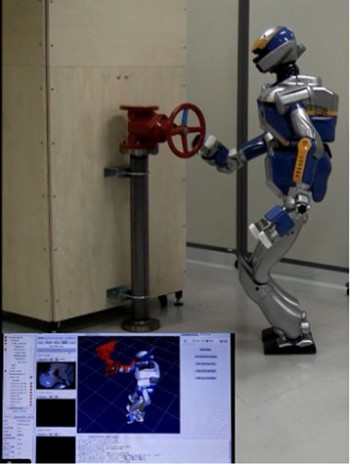Airbus to Develop Humanoid Robots for Aircraft Assembly
May 23, 2016
![JLR’s HRP-2 and HRP-4 robots are put through a series of tests for maneuverability and dexterity. (Images courtesy Joint Robotics Laboratory [CNRS/AIST])](http://res.cloudinary.com/engineering-com/image/upload/w_640,h_640,c_limit/AIRBUSrobot_fll5mv.jpg)
Airbus may soon be getting some new staff; but unlike their current employees, these ones won’t be asking for competitive wages and vacation days.
In collaboration with researchers from Joint Robotics Laboratory (JRL), Airbus has embarked on developing humanoid robots for its factories to take over many tedious, dangerous and difficult tasks and thereby free up skilled human works for higher-valued jobs.
Automation in Aerospace
The aerospace sector has been slow to implement industrial robots compared to other sectors, like the automotive industry, because they were not economically feasible.
Airbus, like other aircraft manufacturers, has low volume and longer production times compared to automotive manufacturers. The company needs skilled workers capable of doing many complex tasks both in and outside an aircraft.
Conventional industrial robots are not suitable for that kind of work since they are usually stationary. This is why industrial robots traditionally work on assembly lines doing repetitive tasks like riveting, tightening bolts or painting.
This is where humanoid robots have an advantage. Sporting legs, dexterous hands and a network of sensors, humanoid robots may just be the versatile automation solution that aircraft manufacturers need.
Humanoid robots are capable of climbing into aircraft, working around humans and doing complex tasks in hard-to-reach areas. For example, most humans struggle to work with their arms extended above their heads for long periods, but that’s not a problem for a humanoid robot.
Airbus has emphasized that these robots will not be replacing workers, but working alongside them. The company wants the robots to increase overall productivity and help its human staff cope with their backlog of orders. These steps are aimed at keeping Airbus competitive with other aircraft manufacturers, like Boeing which is also increasing its level of automation.
Joint Robotics Laboratory to Produce Humanoid Robots
 JRL previously developed the HRP (Humanoid Robot Platform) line, which they plan on implementing with their research for Airbus by testing the HRP-2 and HRP-4.
JRL previously developed the HRP (Humanoid Robot Platform) line, which they plan on implementing with their research for Airbus by testing the HRP-2 and HRP-4.
The HRP’s are human-sized at about 5ft tall and light enough to maneuver about and work on an aircraft, weighing in at just over 85lbs.
They also have 5-fingered hands, allowing them to use any tool a human can use during the manufacturing process. However, JRL anticipates that further development on the robot’s hand-eye coordination will be necessary to reach human-level dexterity.
While the introduction of these robots may be just the thing that Airbus needs to get on top of its backlog, we won’t be seeing them anytime soon.
The robots are projected to be in development for the next four years and won’t be introduced into factories until 10-15 years from now – just enough time for Airbus to convince its workforce they won’t be replaced by robots.
Source: ENGINEERING.com